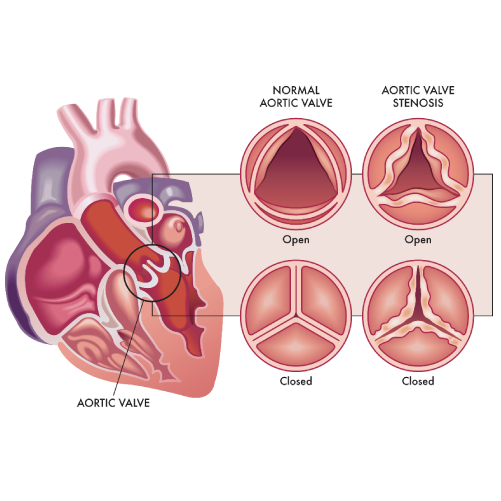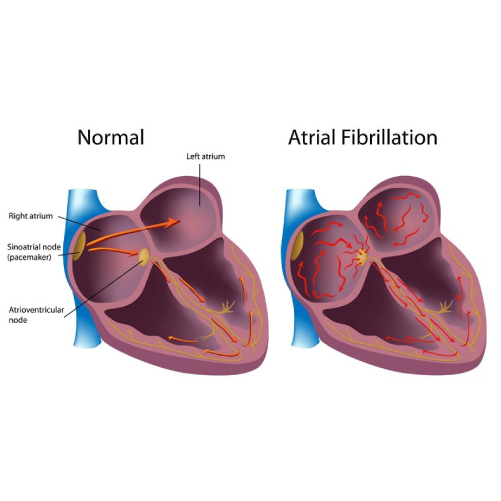Basics about Heart Failure
What is Heart Failure?
Heart failure is not a single disease instead it is a constellation of symptoms. In this disease the heart is unable to meet the requirements of the body by its inability to pump or be able to do so by increasing the filling pressures so that it might pump effectively.

Heart Failure is not a disease but a group of symptoms. It is the result of many diseases affecting not only the heart but other organs of body.
Related : Types of Heart Failure
Heart Failure vs Heart attack vs Cardiac Arrest
All the three terms refer to different medical issues.
- Heart failure is consequent to inefficient functioning of heart.
- Heart attack is due to the interruption of blood supply to the heart.
- Cardiac arrest is a situation where the heart stops to beat.
Symptoms of Heart Failure
Inefficient functioning of the heart leads to fluid logging in the body
- Fluid logging in the lungs – presents as breathlessness – Left Heart failure in medical parlance Early stages of heart failure – breathlessness can be present on walking.
- Advanced stages of heart failure –Breathlessness can be present at rest or, Inability to lie flat or may be awakened from sleep.
- Fluid accumulation in other organs of the body – Right heart failure in medical parlance Legs causing swelling of the feet, Swelling of face, abdomen, Pain in upper right abdomen.
- Heart failure symptoms which are related to the lungs are called left heart failure symptoms, those symptoms which are related to other organs are called right heart failure symptoms.
- Concept of left and right heart
- failure is important in treatment
Related : What Is Systolic Heart Failure?
What causes heart failure?
Heart failure is a result of many disease processes in the body. Common among them being: Coronary artery disease:
- The most common disease that is responsible for heart failure is coronary artery disease. • Coronary artery disease means accumulation of cholesterol in the blood vessels supplying the heart leading to interruption of blood supply to the heart.This interruption of blood supply can either directly reduce the blood supply to the heart resulting in dysfunction or can cause heart attack which can also reduce the heart pumping ability.
- Common diseases – such as diabetes, hypertension and sometimes abnormalities of the valves of the heart and fast beating of the heart of which most commonly atrial fibrillation can all result in reduced efficiency of the heart.
In addition, advanced age itself beyond the age of 65-70 the efficiency of the heart reduces leading to heart failure.
What tests are required for diagnosis of heart failure?
The tests for the diagnosis of heart failure are
- Imaging test
- ECG
- Blood test
Blood tests in heart failure :
- The most common blood test that is done is a pro-BNP test. If it is less than 125, we can safely exclude heart failure as the cause for breathlessness.
- In addition, we look at presence of Anaemia, Renal dysfunction and blood glucose elevation in a patient with heart failure.
Electrocardiogram (ECG) : This remains an important test
Electrocardiogram (ECG) : This remains an important test

- Can detect the presence of previous heart attack.
- Irregular heart beat – most common is atrial fibrillation.
- Presence of any Bundle branch block.
Echocardiogram : The most common and important test for the diagnosis of heart failure is the echocardiogram where we estimate the left ventricular ejection fraction (measures the pumping ability of the heart) or in short called as EF.
Other test done to manage heart failure are cardiac MRI and nuclear test.
Related : Heart Failure – Role of Electrocardiogram (ECG)
What is the role of Angiography in heart failure?
For every 3 patients with heart failure 2 have underlying obstruction to the heart’s blood supply. Identifying this is super important because removal of these obstructions by angioplasty and stent can lead to improved cardiac function.
The blood vessels supplying the heart are the coronary arteries and obstructions are called coronary artery disease. So, whenever there is a coronary artery disease, we can identify that only by performing a coronary angiography.
The major advantage of this investigation is apart from diagnosis in coronary artery disease, in case if any blocks in heart vessels are identified they can be treated by performing a balloon angioplasty and a stent procedure.
The benefit of removing the cholesterol plaques in the heart vessels is that – there can be a strong chance for the heart functioning to recover once the blood flow is restored back to the heart.

DR. RAGHU | Best Cardiologist in Hyderabad
Cardiology Coronary, Vascular and
Structural Interventions
Conditions & Diseases

Angioplasty

Aortic Stenosis

Atrial Fibrillation






